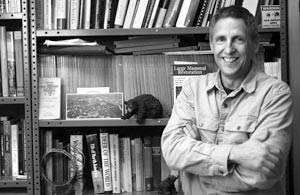
June 23, 2008

An internationally known expert on the endangered Florida and cryptid eastern panthers, David Maehr, 52, died young, doing what he loved, looking for wildlife.

The University of Kentucky associate professor was killed on Friday, June 13, 2008, when the single-engine Piper Cub airplane he was riding in crashed mid-day near Placid Lakes Airport in central Florida. The pilot, citrus grove owner Mason Smoak, 33, also died. Maehr was the only passenger.
Within the cryptozoological community, Maehr was known for his work exploring the existence of the eastern puma, and his research on the rediscovery of the Florida panther. Maehr was an Advisor to the Eastern Cougar Foundation (ECF) and a strong supporter of cougar restoration in eastern and central North America.
“He was known throughout North America and probably throughout the world for his body of work,” said Darrell Land, who leads the panther team of the Florida Fish and Wildlife Conservation Commission in Naples. “That will continue, but he’ll be sorely missed.”
Helen McGinnis of the ECF, who noted Maehr was “always supportive and helpful” to the group, said, “At the 9th Mountain Lion Workshop in early May, 2008, a large remembrance panel was devoted to cougar biologists who have died on the job in the past ten years. Many of them lost their lives in plane crashes. Studying cougars can be dangerous, but not because of attacks by the cougars.”
Maehr began studying panthers in 1985 when little was known about the severely endangered animals. Scientists estimated only about 30 remained in the wild at the time. He and Land studied almost everything about them – their eating habits, habitat and breeding.
The research affected conservation in South Florida for years, restricting where developers could build and determining which lands the state or county bought to protect panther habitat. The panther population is now estimated at about 100.
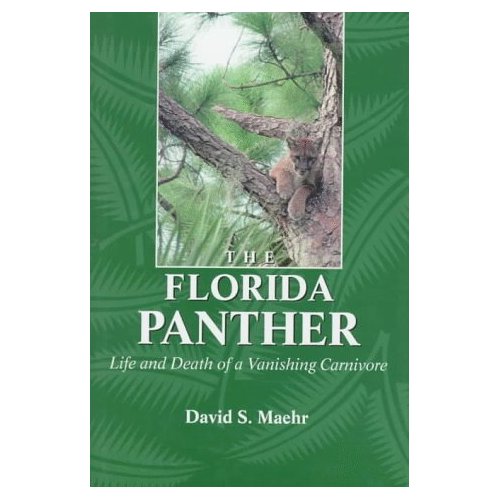
David S. Maehr’s book Florida Panthers: Life and Death of a Vanishing Carnivore is a key work, as Maehr was the project leader of the Florida Panther Study Project. The book tells the story of a large felid that was considered mythical as recently as the 1970s, but is now known to exist beyond a doubt.
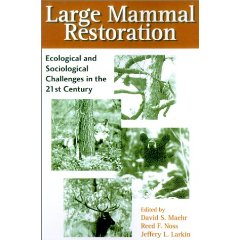
Large Mammal Restoration: Ecological And Sociological Challenges In The 21St Century by Melvin E. Sunquist (Foreword), David Maehr (Editor), Reed F. Noss (Editor), Jeffery L. Larkin (Editor).
David S. Maehr was born in Fairbanks, Alaska but was raised in the Midwest where he spent many hours in the remnant wilds of southern Ohio and eastern Kentucky. He earned a B.S. in Wildlife Management from The Ohio State University and an M.S. in Wildlife Ecology from the University of Florida. Maehr received his Ph.D. in Wildlife Ecology and Conservation while working with Larry Harris at the University of Florida.
Maehr was an associate professor of wildlife and conservation biology in the Department of Forestry. He spent time protecting Florida’s endangered panther population while previously working for the Florida Game and Fresh Water Fish Commission. He is also known for his work reintroducing elk to Eastern Kentucky and his research on the black bear population in Appalachia.
“He was very passionate about protecting Florida’s large carnivores, the panther and the black bear,” said colleague Tom Hoctor, a research associate at the University of Florida’s GeoPlan Center. “It’s devastating for us. … It’s hard to find folks who have the intelligence and passion to become the expert in his field and make the difference he was making.”
Smoak and Maehr were conducting aerial surveys of Highlands County black bears as part of a multi-year project when they crashed, according to the Archbold Biological Station in Lake Placid, where Maehr was a visiting scientist while on sabbatical from the university.
“The plane came out of the sky and went straight into the earth,” Capt. Paul Blackman of the Highlands County Sheriff’s Office said witnesses told him. “It apparently stalled, did a 360 and went straight down.”
The Federal Aviation Administration is investigating the crash.
In a statement, his family described Maehr as “always generous and giving of his time, energy, and devotion.
“David’s professional legacy will live on through the over two dozen graduate students he mentored at UK, most of whom are now successfully employed throughout the country,” said the statement. “He will be greatly missed.”
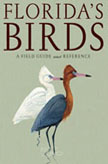
Florida’s Birds 2nd Edition by David Maehr and Herbert Kale.
“His dedication and commitment has been passed on to uncountable students, colleagues and lovers of wildlife,” said College of Agriculture Dean M. Scott Smith in a statement.
Jeff Larkin was a graduate student under Maehr and now is an assistant professor of conservation biology at Indiana University of Pennsylvania.
“It’s more than just losing a mentor,” Larkin said. “For me, he was much more than that, he was a father figure and a grandfather figure to my kids.”
Colleagues said Maehr had a humorous personality. John Cox, an adjunct assistant professor of conservation biology at UK, said Maehr enjoyed scuba diving, playing the trumpet and caving.
“It’s very unfortunate,” said Thomas W. Reese, an attorney who represents the Florida Wildlife Federation and Collier County Audubon Society. “He’s a very good panther and bear biologist and he did an awful lot of field work. Much of the work they do is by small planes and it is hazardous.”
As the principal researcher of a fiercely protected species, his work came under fire. In 2004, environmental groups released a report that said his research was biased and that federal agencies allowed the destruction of habitat by relying on it. A key issue was how far and where panthers would roam. Maehr used daytime tracking research to show they wouldn’t travel more than 300 feet between forests, though some said the nocturnal range would be different.
A recent study by the wildlife commission found that panthers do spend much of their time in forests, even during the night. Land said his findings are holding up despite further research and changes in technology.
“Science is always changing,” Reese said. “It wasn’t total bad science, it just wasn’t total correct science.”
Maehr is survived by his wife, Diane, and his two children, Erin Maehr of New York City and Clifton Maehr of Lexington, parents, brothers, and sister.
Sitting side by side Sunday, Maehr’s wife and daughter told a Lexington news station (LEX18) the man they loved made the world a better place. “I really looked up to him. He was a hero for me. I try to be like him, model my life after his, be as successful as he is. He was well liked,” said daughter Erin Maehr.
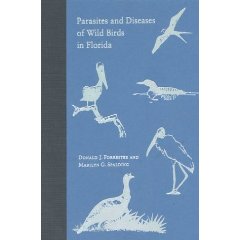
Maehr was also a published illustrator, as he was credited in this book: Parasites and Diseases of Wild Birds in Florida by Donald J. Forrester (Author), Marilyn G. Spalding (Author), David S. Maehr (Illustrator).
David Maehr was a published author and an accomplished artist. His wife Diane says David’s passion for the world around him was simply contagious. “Work was a big part of his life. He died doing something he loved, which is some consolation. I wish we could all go that way, doing what we love,” said Diane.
David’s family plans to travel to Florida to visit the accident scene and tie up loose ends, however David will be laid to rest in Kentucky. “It’s a celebration of his life. He’ll live on forever in us. We may not see him physically but he’s still here,” said Diane.
Funeral arrangements are pending.
About Loren Coleman
Loren Coleman is one of the world’s leading cryptozoologists, some say “the” leading living cryptozoologist. Certainly, he is acknowledged as the current living American researcher and writer who has most popularized cryptozoology in the late 20th and early 21st centuries.
Starting his fieldwork and investigations in 1960, after traveling and trekking extensively in pursuit of cryptozoological mysteries, Coleman began writing to share his experiences in 1969. An honorary member of Ivan T. Sanderson’s Society for the Investigation of the Unexplained in the 1970s, Coleman has been bestowed with similar honorary memberships of the North Idaho College Cryptozoology Club in 1983, and in subsequent years, that of the British Columbia Scientific Cryptozoology Club, CryptoSafari International, and other international organizations. He was also a Life Member and Benefactor of the International Society of Cryptozoology (now-defunct).
Loren Coleman’s daily blog, as a member of the Cryptomundo Team, served as an ongoing avenue of communication for the ever-growing body of cryptozoo news from 2005 through 2013. He returned as an infrequent contributor beginning Halloween week of 2015.
Coleman is the founder in 2003, and current director of the International Cryptozoology Museum in Portland, Maine.
Filed under Alien Big Cats, Breaking News, Cryptomundo Exclusive, Cryptotourism, CryptoZoo News, Cryptozoologists, Cryptozoology, Megafauna, Men in Cryptozoology, Mystery Cats, Obituaries